What is the difference between a teleplay, script, and screenplay? Although some people think these terms are interchangeable, every screenwriter must understand the differences.
We’re going to break down how these types of scripts are defined and why it’s important to understand the differences between script, screenplay, and teleplay.
1. WHAT IS A TELEPLAY?
Discover a genre
Before we can answer “what is a teleplay?”, we must first know the difference between screenplay vs script.
While both words are used interchangeably, the main difference comes down to the function. Generally, a script features character dialogue and stage directions, while a screenplay includes other production or story details that might happen off-camera.
This brings us to the teleplay definition:
TELEPLAY DEFINITION
What is a teleplay?
A teleplay is a lesser used term for a television script. The term used to be commonly used when multi-cam shows were more common, and networks controlled much of television. With the blending of cinema, streaming, and TV there has become much less of a need to differentiate these formats.
A teleplay does not include the outline or story document, which are separate (and therefore paid separately).
There are specific ways to divide credits when it comes to writing for TV, which we'll dive into later.
Usually, the original writer gets credit for story, but if the story editor or a producer did significant work (at least changed 51% of a script), they can earn credit on the teleplay.
These additional credits are shown as “Story by Joe Freelance” and then “Teleplay by Joe Freelance and Becky Story Editor.”
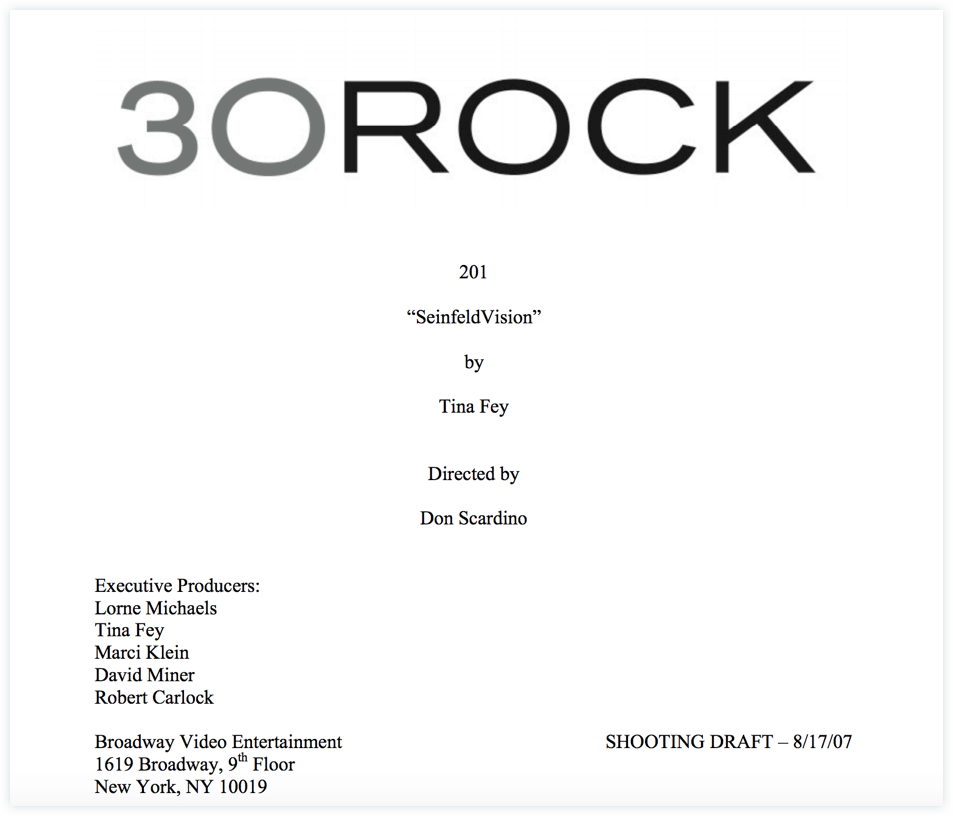
In this case, Tina Fey got credit for both story by and teleplay by.
That being said, a teleplay is still a script or screenplay.
The words only really delineate who gets paid for what.
However, there are specific formatting aspects that are required to be in the script, so crew members can effectively do their jobs.
A teleplay for multi-cam sitcoms need to list who's in every scene under the scene header and dual space the dialogue.
Single camera scripts need to number scenes a specific way.
Regardless of the type of show, all teleplay scripts need to lock pages once they send out a white production draft.
That way, when revisions are made, crew members can throw in the new A and B pages into their binders without losing notes from any other unadjusted pages.
Script supervisors and first ADs can make script breakdowns and shooting schedules. Call sheets and sides can be sent out.
Because scripts - of any kind - are written to be produced, there are specific elements required in order to make that happen.
If you're writing a script, screenplay, or teleplay - we suggest you write them with StudioBinder's free screenwriting software.
Your stories will be written in perfect industry standard format, and you can write as many scripts, teleplays, and screenplays as you like with an unlimited page count - and your script can sync across all the StudioBinder features.
As you write your script, StudioBinder will guide you through with helpful prompts along side the most visual screenwriting experience available.
Check out the link above and get started on your story idea today.
RELATED POSTS
2. HOW DO YOU FORMAT A TELEPLAY
The shape of things
While writing for television is similar to writing for film, a teleplay is produced with the specificities of that TV show.
Here are some teleplay examples from TV scripts that will help you learn how to write a teleplay:
Malcolm in the Middle
NCIS: Los Angeles
Men Behaving Badly
Notice that there are some subtle formatting differences between those three, but that's it. A story is still a story.
That being said, if you're writing a movie, you're not going to have act breaks.
But if you're writing for television, you'll have at least three, if not more.
Most teleplays also include a cold open and a tag.
Here's a quick rundown of teleplay formats:
Multicam Teleplay Example
Because multi-camera TV is one of the oldest forms, some if it’s formatting is based on old school processes.
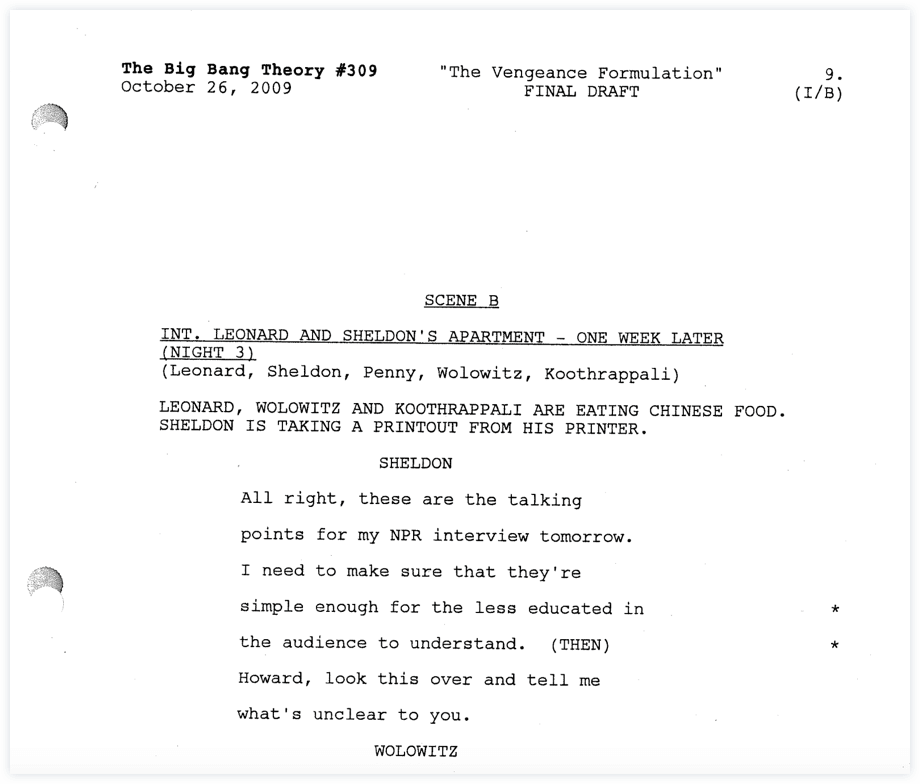
The teleplay format for this Big Bang Theory TV script is specified for the way it’s shot.
As you can see by the picture, multi-cam teleplay format is a little different than usual. That's because it's the oldest form of television.
The dialogue is double spaced, the action lines are capitalized, and the slugline has a cast list directly underneath it.
Single-Camera Drama/Sitcom Teleplay Example
The only difference between teleplays and film scripts is the inclusion of act breaks, which signify commercial breaks.
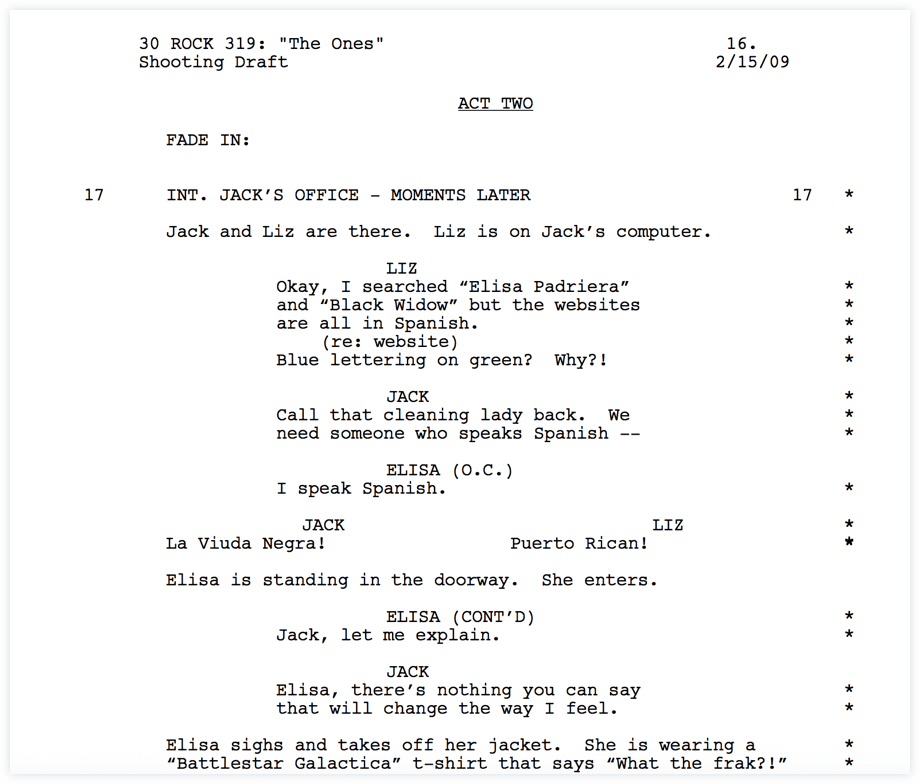
30 Rock follows the single-cam teleplay format
As you can see, these look very similar to the typical movie screenplay format because, unlike multi-cams, they are shot the same way as movies.
Multi-cams are "recorded in front of a live studio audience" and are rehearsed over the week and shot in, typically, one day.
Single-cams - whether they're drama or comedy - are shot over the course of a week with little rehearsal.
3. BUSINESS AFFAIRS
Teleplay by vs. Story by vs. Written by
So, let’s say you're on a show and you're writing an episode. The show runner says you're gonna split credit with him. He's getting “story by” and you're getting “teleplay by.”
Sound like a deal?
First off, yes, that is a deal. Some show runners will strong-arm their way into more credit than that. But, typically, a writer should get all the credit. If a writer gets all the credit for an episode, then the credit will just say "written by” and nothing else.
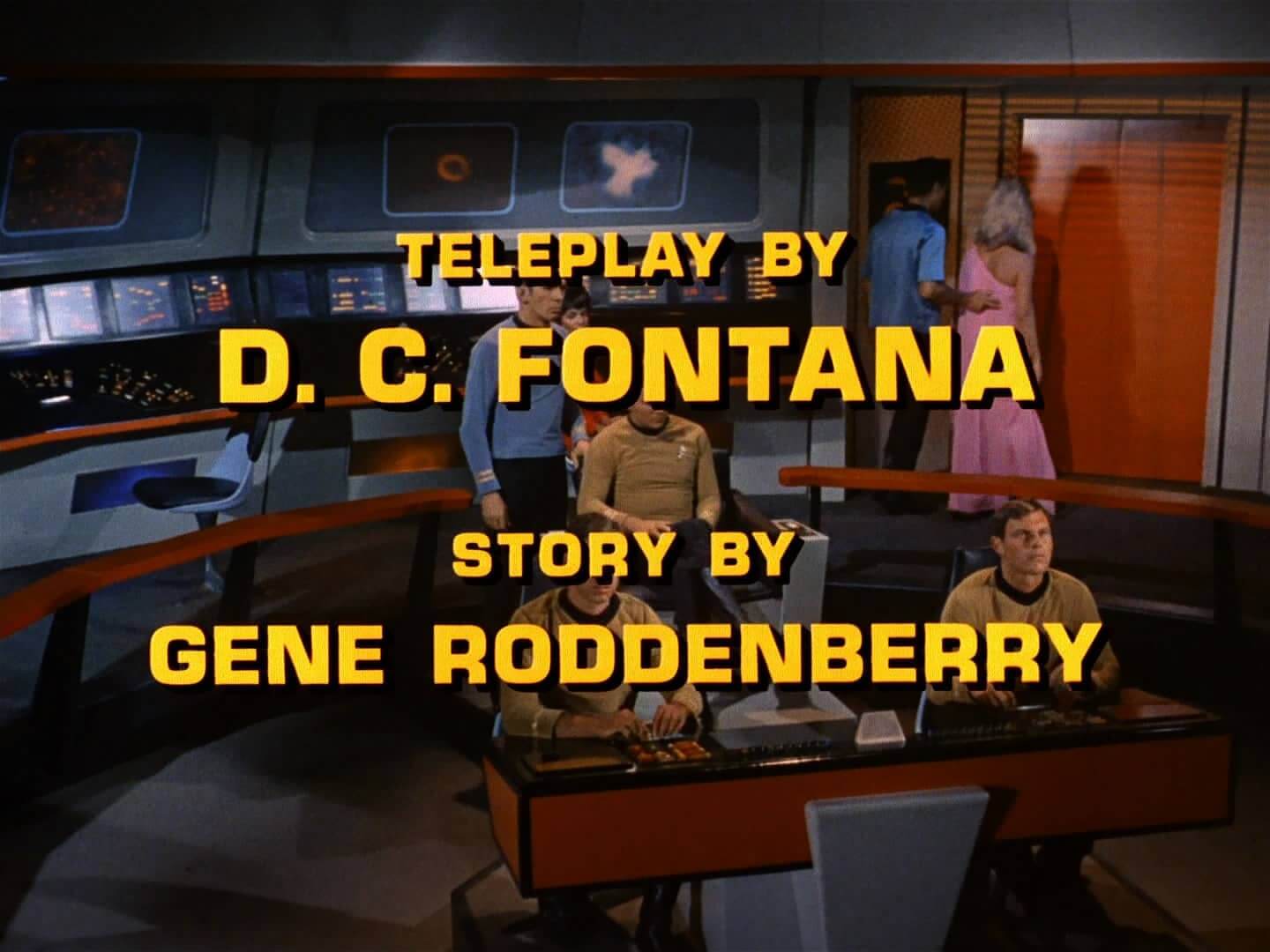
It’s not uncommon for writing credits to be broken up.
If a writer is splitting credit collaboratively for both story and teleplay, it'll say:
"Written by Person One & Person Two"
If they didn't collaborate, the ampersand is absent, instead, the word "and." If they're splitting story and teleplay, it'll say:
"Story by Person One" and "teleplay by Person Two"
This is all because of how shows used to write their episodes, as we explained earlier. It's a collaborative process involving a lot of people.
But, in this day and age, writers’ rooms are full of writers, reaching up to sixteen or so in one show. They don’t need to outsource episodes anymore and, sometimes, the orders aren’t long enough for every writer to get an episode.
So, the term teleplay is typically used most often by those in business affairs, whose job it is to specify and, therefore, pay for the different elements — story by, teleplay by, or, written by.
As they say, knowledge is power, so make sure you familiarize yourself with Hollywood lingo and learn the names for different types of scripts.
RELATED POSTS
UP NEXT
How to Pitch a TV Show
Now that you understand what all about the teleplay, you should learn how to develop story ideas and pitch your very own TV show.
Getting your story on paper is one thing, but bringing it to life is the most important step. After all, whether you call it a teleplay or a screenplay, it’s written to be made into something else.
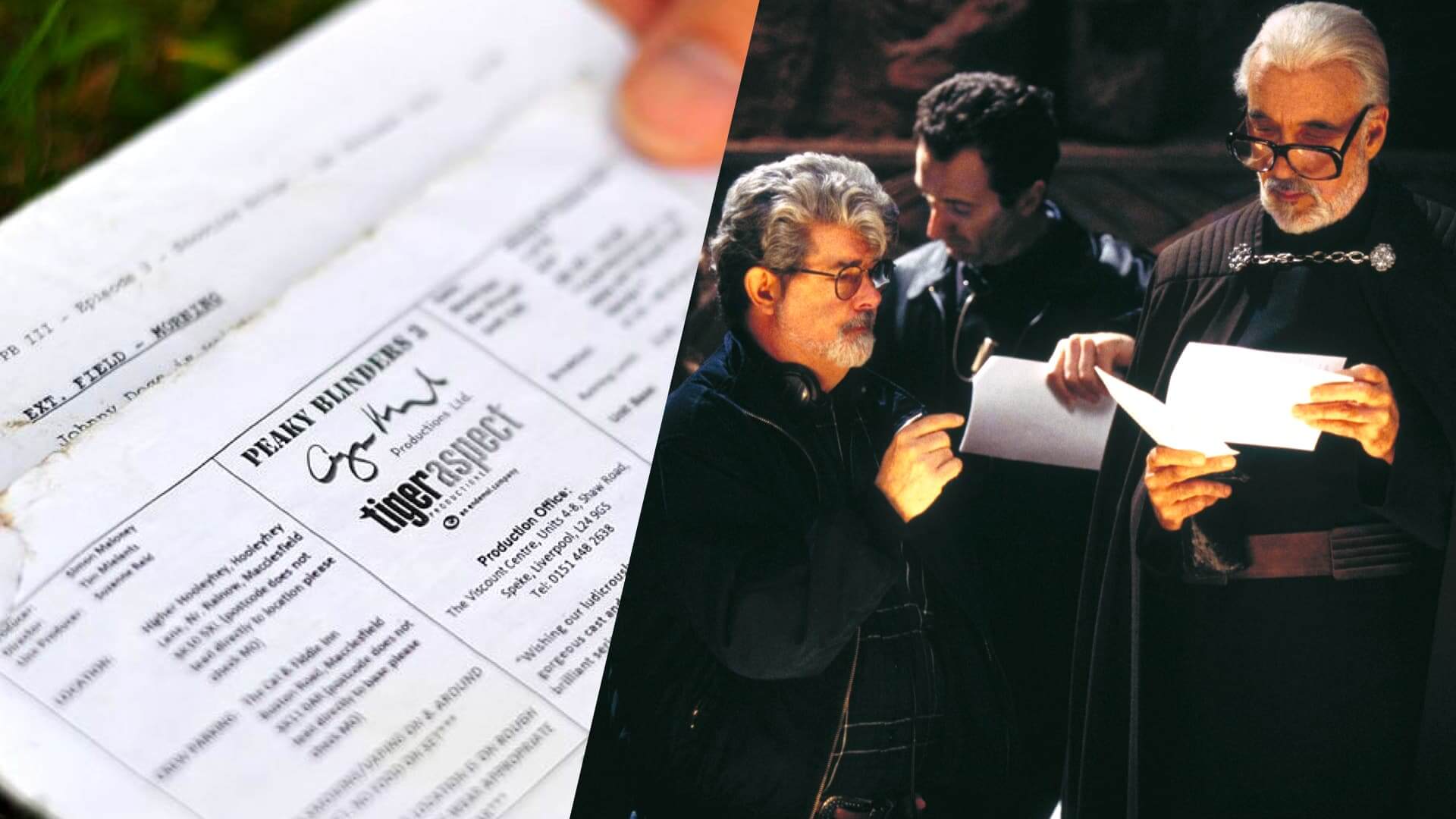
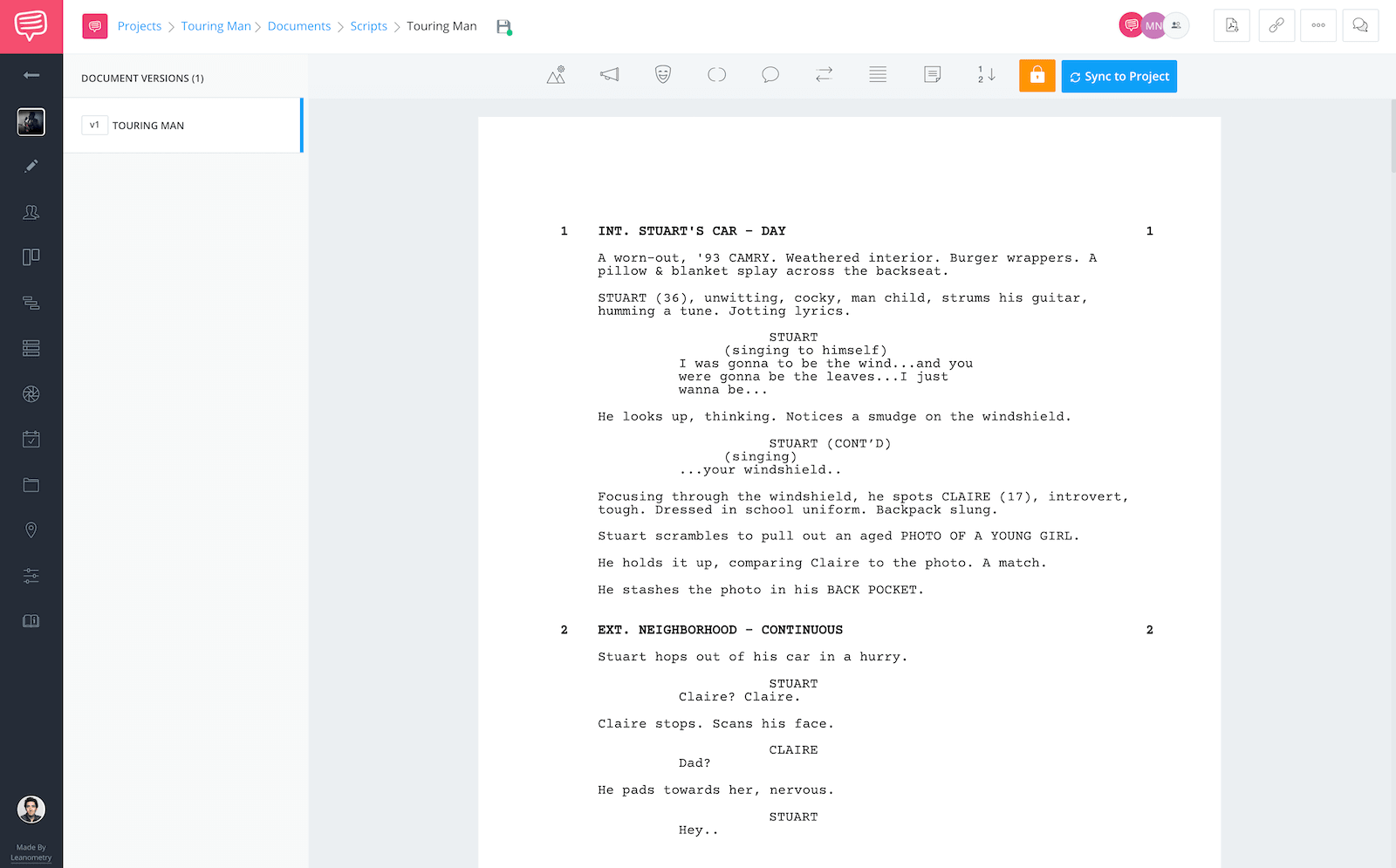

Hello.
I was wondering if writing a script for Streaming platforms (Netflix, Hulu, etc) have act breaks like normal Television. Since they don't have commercials and don't seem to crossover. ( Netflix to CBS for example) Then I wonder if that rule is no longer used.
Thanks for the great articles!
How do I format the appearance of a Newspaper Headline on the screen?